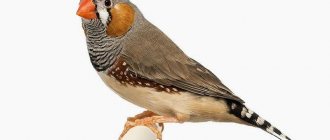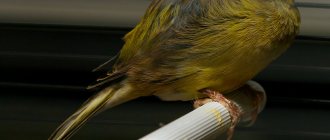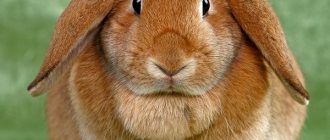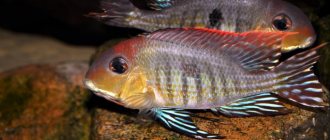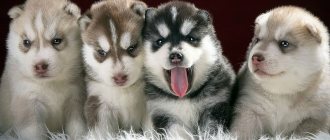Breeders of cute and fluffy animals should have reliable information about how much a rabbit weighs and when the animal gains the most weight. Such information will help determine the effectiveness of the selected food and the time when the rabbit will produce the largest amount of meat when slaughtered. It is worth noting that each breed of animal has an individual growth rate.
Weight by breed
When choosing a breed, beginning rabbit breeders rely on maximum weight and conditions for weight gain. At the same time, they are studying the influence of various factors on the growth rate of rabbits.
| Breed | Weight, kg |
| Butterfly, Silver | 4-6 |
| Belgian Flanders | 6-12 |
| White giant | 6-8 |
| Blue Royal Giant, Californian, Soviet Chinchilla | 4-5 |
| German giant | 7-9 |
| New Zealand | 4,5-6 |
| Gray giant | 4-7 |
| Soviet Marder | 3-4,5 |
| French ram | 6-7, 5 |
| Black-brown | 5-7 |
Average rabbit weight
Rabbits are a popular species of livestock, which farmers are happy to breed for their tasty meat and precious fur. Caring for and maintaining rabbits is much easier than large livestock, and thanks to their high fertility, fluffy bunnies calmly reproduce in captivity, bringing the desired offspring.
The approximate weight of a rabbit is about five kg, but, of course, there are also giant varieties whose weight reaches 8–9 kg. Slaughter weight differs from live weight by 30%, that is, if the animal weighed 10 kg before slaughter, then the final weight will be approximately 7–7.5 kg. The officially registered maximum weight of a rabbit is 25 kg.
In order to obtain meat products, breeders mainly keep representatives of large breed lines, which rapidly gain body weight, even if the animals’ diet consists of cheap feed.
Weight by month
Each animal has its own characteristics and develops individually. By monitoring the growth of rabbits of different breeds, scientists derived average growth rates by month. Animals usually gain maximum weight for slaughter by the 8th month of life, sometimes by a year.
| Breed | Weight, g | |||||||||
| Age, months | 0 | 1 | 2 | 3 | 4 | 5 | 6 | 7 | 8 | |
| Butterfly | 50 | 600 | 1600 | 2400 | 3200 | 3600 | 3900 | 4100 | 4300 | |
| Belgian Flanders | 100 | 800 | 2600 | 3600 | 4700 | 5500 | 6300 | 7000 | ||
| White giant | 70 | 700 | 2300 | 3400 | 3800 | 4200 | 4600 | 5000 | ||
| Blue Royal Giant | 600 | 2100 | 2900 | 3200 | 3600 | 4000 | 4200 | |||
| Californian | 50 | 500 | 1500 | 2700 | 3100 | 3500 | 3800 | 4100 | 4300 | |
| German giant | 900 | 1200 | 3200 | 4800 | 6400 | 7100 | 7800 | 8500 | 9000 | |
| New Zealand | 60 | 600 | 1600 | 2500 | 3200 | 3500 | 3800 | 4100 | 4300 | |
| Silver | 500 | 1500 | 2200 | 3100 | 3700 | 4200 | 4700 | 5000 | ||
| Gray giant | 600 | 3000 | 3600 | 4100 | 4600 | 4800 | ||||
| Soviet Marder | 500 | 1400 | 2100 | 2900 | 3200 | 3600 | 4000 | 4200 | ||
| Soviet chinchilla | 600 | 1500 | 2800 | 3100 | 3500 | 4000 | 4300 | 4800 | ||
| French ram | 80 | 1000 | 2400 | 2600 | 3800 | 4300 | 4400 | 5300 | 5500 | |
| Black-brown | 700 | 1600 | 2500 | 3200 | 3600 | 4000 | 4500 | 4800 | ||
General signs of dwarf decorative rabbits
Decorative (dwarf) rabbits are animals weighing in the range of 1.5-2.5 kg, differing in the shape of the head and body, the length of the ears and the thickness of the coat.
Regardless of the breed, miniature animals vary in hair length.
| Type of rabbits | Hair length in cm |
| Shorthair | 1,50 – 2,0 |
| Normal hair | 2,50 – 4,0 |
| Downy (long-haired) | Over 5.0 |
Dwarf rabbits vary in fur length and ear shape
The coat of dwarf rabbits is soft and silky. The body of representatives of this class of rodents is characteristic of all rabbits - rounded, shortened in length. The head looks quite massive, its ratio with the length of the body is 1:2, the neck is practically absent. The ears of miniature rodents can be very short - up to 5-6 cm, or hang below the level of the lower jaw and reach a length of 20 cm.
Breeders are developing varieties of mini-rabbits of various colors
The purpose of dwarf rabbits is different from domestic rodents for meat or fur-and-down production. Their goal is to please their owners with their appearance, affectionate nature and playfulness. The majority of dwarf rabbit breeds are bred for keeping in a home or apartment.
Important: dwarf rabbits are quite timid, but they can respond to careless handling, a loud voice or overly energetic movements with counter-aggression - biting or marking territory.
Growth characteristics of rabbits
Rabbits are born blind, with 16 baby teeth. After a week, their body is covered with the first fluff; over the course of a month it increases and by the 25th day it becomes full-fledged fur.
On the tenth day of life, they open their eyes, and on the 20th they are able to leave the home and eat food. Milk teeth fall out on the 18th day of life, after 10 days permanent teeth appear.
The period of birth influences the development of newborns. Those born in winter or early spring grow faster, unlike rabbits born in summer or autumn. Babies are born very tiny, weighing 40-100 grams. After a week, their weight doubles, and within a month - 10 times.
This is facilitated by the composition of mother's milk, enriched with nutrients: fats 10-20%, proteins 13-15%, calcium 0.60-0.70%, phosphorus 0.40-0.50%, milk sugar 2%.
Lactating females produce milk abundantly in the summer. The highest rates are for Californian and Soviet chinchillas, the lowest for New Zealand ones.
Until 3-4 months, the growth rate of rabbits is high, then gradually decreases. At this age they become sexually active. They have a very weak spine and limbs that they can easily break. The skeleton is fully formed by the first year of life.
Hygienic care for rabbits
Hygienic care for dwarf pets consists of weekly combing of hair and trimming of claws. During the molting period, decorative rabbits require daily combing of their fur. If tangles appear, they should be carefully cut out with scissors.
Your rabbit's nails need to be trimmed as they grow, every 3-4 weeks. Before trimming the claws, be sure to ask someone close to you to hold your pet tightly and use a nail clipper, which you can buy at a pet store. After the procedure, the length of the claws should be no more than 3 mm.
You can bathe animals only in the most extreme cases - severe pollution, exposure to any chemicals, and also during heat. After bathing, wrap the animal in a warm towel or blanket and hold it in your hands until it dries completely, otherwise it may catch a cold or get scared.
What affects weight gain
In addition to genetic data, a properly formed diet is important. It includes different types of feed, vitamins and minerals. Rabbits have a very unique digestive system (food should always be in the gastrointestinal tract), so they are fed in small portions several times a day: 4 times for a nursing rabbit and newborns, for other animals 2-3 times are enough. But there should be hay in the cage all the time. Access to clean drinking water is provided freely.
For the normal functioning of the gastrointestinal tract, it is necessary to adhere to the chosen diet and avoid sudden changes in food. Of the vitamins, special attention should be paid to A, D, C, E, B.
There are special additives - growth stimulants. They not only accelerate weight gain, but also strengthen the immune system and build resistance to diseases. The dose of such a drug is calculated based on the nutritional characteristics and age of the animal.
The growth of rabbits depends on their physical condition. To maintain the health of individuals, they organize comfortable living conditions, adequate care, and maintain high-quality nutrition.
Breeding giant rabbits
Have you decided to breed rabbits? First of all, decide on the goal, what attracts you more : skin, meat and pets for your own pleasure? In this article we will look at several breeds of giants.
Belgian Flanders Giant
The largest animal, their body is muscular and there is a lot of meat. The average weight of this rabbit varies from 4 to 8 kg, with a record weight of 13 kg. The height reaches 80 cm, the minimum fur length is 4 cm. They are strong and thick, they have tasty meat, which has thin streaks of fat and the skin is of excellent quality. They have different colors:
- white;
- blue;
- grey;
- black;
- sand;
- red-sandy (fauna);
- pronounced dark gray (kangaroo);
- silver;
- ashen;
- orange.
Rabbits: their varieties and breeds
By nature, they are good-natured and non-conflicting, they love to play with children, and get along with other animals. They love to communicate with their owner and eat directly from their hands. The female produces litter at the age of nine or ten months, up to 16 rabbits are born , when the standard litter is considered to be 5 or six rabbits. The female takes care of the children for up to 50 days, and then they should be transplanted into other cages. The young animals grow quickly and gain weight rapidly.
This breed can be given rodent food purchased at a pet store or prepared at home. They eat raw and brewed cereals, vegetables and fruits, and are very fond of juicy foods. Be sure to feed them hay, leaves from radishes, raspberries, and beets, but hay is the main product in the diet of an adult rabbit and should be given in unlimited quantities. The diet must contain foods containing vitamin A - parsley and carrots contain a lot of it. Feed twice a day: morning and evening.
When breeding rabbits of this breed, you will not only get pleasure, but also make a good profit. The animals' meat is of high quality and tasty; the carcass produces 85% meat and 15% fat. The demand for skins is very high, they are of high quality.
White Giant
The animal is unpretentious and does not require special conditions. From this breed the owner receives a lot of tender meat and large snow-white skin. His character is calm and his appearance is handsome. Rabbits' fur is ideally white, without impurities, marks or shades , smooth and has a thick coat. The body is stocky, slightly elongated, deep chest and rounded croup, straight and wide back, legs long and straight, set wide. But there are fragile individuals in the breed, but they are no different from their relatives. The weight of a rabbit varies from 4.5 to 6 kg.
When breeding this breed, the skin turns out to be large in size and it is profitable to sell it for sewing fur coats. Tender meat is in demand in the consumer market. The litter can be up to nine cubs; the female rabbit cares for her offspring and does not eat them. Rabbits are laid out at two months of age.
They feed on grass and tops, various vegetables and grains, and always hay. They love bread dipped in milk.
Vienna Blue
They have meat qualities, early maturity, and adapt well to any conditions and feed. The breed has a dense body, slightly elongated, muscular, and has a wide back and chest. The weight of an adult rabbit reaches 5 kg, some grow up to 7 kg . They have thick hair, steel color with a blue tint, uniform, without gray or black hair. The fur on the belly and chest is often lighter. Vienna Blue rabbit skins are used to imitate the valuable furs of fur-bearing animals in light industry.
Making metal cages from mesh with your own hands
The favorable climate for them is the central part of Russia; in good conditions they grow very quickly. Females are highly fertile and give birth to up to nine rabbits in one litter; they can give birth at the beginning of winter. Rabbits have a pronounced maternal instinct , they do not abandon their cubs, the rabbits survive even in cold conditions. Rabbits are gray in color, after the second moult they acquire a blue tint. In summer, a brownish color sometimes appears, but it disappears in winter after molting. They live on average up to seven years, but some rabbits can live up to twelve. After slaughter, the skins are large in size, the meat yield reaches up to 60%.
Rabbits of the Risen breed (German giant)
They are also called the German Giant or German Risen - these are giant rabbits and are very popular. On average they weigh eight kilograms, but there are giants that reach up to 15 kg. They have a massive body that grows up to 70 cm, powerful bones, and a large and wide head. The wool is thick and dense, grows up to 4 cm, varied in color:
- blue;
- grey;
- black;
- yellow;
- gold.
In one litter, a female rabbit brings up to 12 cubs. The German breed is one of the largest breeds and belongs to the meat-skin group. To breed them, you need to take into account some nuances: they have health problems, giant rabbits need a lot of food, and they need to be kept in huge cages. An analogue of this breed, the gray giant, has taken root well in Russia.
Gray giant
This breed belongs to the meat-skin normal-haired group, the color is natural gray-hare (agouti) with shades from reddish to black, their bellies are white and white “socks” are “dressed” on their paws. The hair color is uneven, the fluff is uniformly bluish. The output of the skins has a large area.
The body is elongated, the chest is wide, there is often a dewlap, the back is wide, the limbs are straight and long, the length of the body reaches 66 cm. The croup has good width and roundness. The weight of these rabbits varies from 4 to 7 kg. Meat is in demand due to its dietary properties.
Basic criteria for raising rabbits, breeding in different ways
This breed does not require special housing conditions or insulated cages. They are undemanding and unpretentious when it comes to food, are highly fertile, lively and milk-producing. But they should not be overfed or underfed, as this makes the females indifferent to mating. Sufficient volume and frequent feedings are quite suitable. If this does not happen, digestion may be disrupted.
The Gray Giant is a breed that is not very precocious, but fertile; on average, a female gives birth to eight rabbits per litter, sometimes up to 11 babies. Females are conscientious mothers and take care of their offspring. Rabbits are born weighing 81 grams, by two months the weight reaches 1.5 kg , at three months 2 kg, at four months - 2.6 kg.
This is if their diet consists of semi-concentrated food. If they are given food with a high protein rate, the weight will be greater: at two months - 1.6 kg, at three - 2.2 kg. The slaughter yield will be 55 and 57%, respectively.
Risen - a giant from Germany
German Riesen is the work of breeders from Germany. The breed was developed from the Belgian giant in 1937. Translated from German, “Riesen” means giant. This breed belongs to the meat and wool category, like most other giant rabbits.
The weight of an adult Risen is 6-10 kg. However, some rabbits reached a weight of 14 kg. Rabbits have well-developed muscles and a massive build. They have fairly large, fleshy ears located on a wide head; the length of the ears reaches 20 cm. The legs are massive and strong. The fur is thick and dense. The length of the pile reaches 4 cm. There are various colors: sand, blue, black, dark gray and others.
Rizen's character is excellent. They are good-natured and fearless. They can also be kept as pets. These rabbits are not particularly popular on the farm. They grow quite slowly and require a lot of space to keep them.
Features of maintenance and care
It is more advisable to place rabbits of giant breeds in wooden cages, placing them in places protected from direct sunlight and drafts. The home should be spacious. Its dimensions are determined individually, taking into account the age and breed of the animal. To raise an adult giant, a cage with an area of at least 0.6 m2 (80×100×65 cm) is required; for a female rabbit with cubs, you will need an enclosure measuring at least 100×150×65 cm.
The cage must be spacious, clean, protected from adverse weather conditions
When preparing a home for rabbits, it is more practical to make the floor from a metal mesh, since it is practically not contaminated with feces, which ensures cleanliness and simplifies maintenance. But representatives of some giants, for example, white and gray, due to their large weight, have a predisposition to the appearance of corns and the occurrence of pododermatitis. Therefore, the flooring for each breed of rabbit is selected individually. The solid bottom should be covered with hay, straw or sawdust. The last option is the most preferable, since sawdust perfectly absorbs moisture and eliminates unpleasant odors.
There must be space in the cage for a feeder and drinking bowl, and a queen cell should be equipped for the female.
The mother liquor is necessary for breeding and milk feeding of baby rabbits up to an average of 1.5 months of age.
Representatives of breeds that are adapted to Russian climatic conditions and tolerate cold temperatures well can be kept outdoors all year round. However, in severe frost, it is better to bring the cages indoors, as there is a risk of frostbite to the extremities.
It is important to keep areas where animals are kept clean to prevent the spread of viruses and bacteria. Cleaning is required at least 1-2 times a week.
The following video will introduce you to an interesting way of equipping a cage for a large rabbit:
Flanders is the most common breed of large rabbits
The Flanders or Belgian Giant is perhaps the most famous breed of large rabbit.
The first mentions of these giants appeared 500 years ago. They began their history in Belgium in the province of Flanders, hence the two names - Belgian giant and Flanders. These rabbits belong to the meat and wool breed. Flanders
The maximum weight of this breed is reached by 1 year and is 8-10 kg. The body length of giants reaches 90 cm. If a rabbit is less than 70 cm, then this is considered a breed defect. Its front legs are short, and its hind legs are quite long and large. They have a heavy and large head with long ears, the length of which reaches 19 cm. Flanders have a strong skeleton, a straight and wide spine. The tail is long, stiff and slightly carried upward.
The breed's fur is quite thick and silky. The length of the hair reaches 3-4 cm. The coat can have the following color:
- gray-brown;
- blue;
- white;
- coffee;
- grey;
- white;
- kangaroo;
- black.
Red Flanders
Flandre is calm by temperament. He will not jump and run around like small breeds. He prefers to lie quietly and watch. Flandre is quite friendly and calm, he treats people well. He easily allows himself to be petted and played with. This breed is a good alternative to affectionate dogs, such as Labradors. They are truly gentle giants that get along well with both people and animals.
How to find out the age of a pet?
It is difficult for an inexperienced owner to determine the age of a pet. However, there are a number of signs that distinguish a young individual from an adult pet.
- With age, teeth turn yellow. Claws. In young animals they are straight, soft and transparent. With age, due to constant growth, the claws begin to bend inward and acquire a yellow tint.
- Ribs. If you feel the softness of the bones when palpating with your fingers, then the baby rabbit has not reached six months of age.
- Teeth. As the animal approaches a year, its teeth turn yellow and dark spots appear on the surface of the enamel. The older the pet, the richer the yellow tint.
- Eyelids. In a young individual, the skin around the eyes is smooth and elastic. As you get older, your eyelids lose elasticity and sag.
- Fur. An adult pet has a thick coat with a thick undercoat. The young animal has a smooth, even and shiny coat.
How much does a rabbit weigh?
One of the priorities in animal husbandry is obtaining high-quality meat products by breeding rabbits. Acquiring a high income is possible only if certain rules are followed. The criterion that all recommendations have been implemented is the corresponding increase in animal weight. You can find out the weight of a rabbit by weighing it. The result is compared with the values indicated in the tables calculated for different breeds.
Advantages and disadvantages of Gray giants
The advantages of the breed are:
- fertility and developed maternal feelings in females;
- not a tendency to eat offspring;
- good adaptation to various conditions;
- not picky about food;
- immunity to many diseases;
- calm and friendly disposition;
- pleasant appearance;
- Possibility to keep it at home.
As for the disadvantages, they are:
- voracity;
- the risk of rabbits appearing with crooked and thin legs;
- low slaughter yield compared to other meat breeds;
- not very high quality fur with uneven color and thickness;
- lower quality of meat compared to Flanders;
- decrease in the taste characteristics of meat after 7 months of the animal’s life.
The relationship between health and weight gain
An important factor for rapid weight gain is the health of the rabbits. The physical characteristics of eared animals differ from other types of farm animals. The normal body temperature of lagomorphs can vary from 37 to 41 degrees, falling in winter and rising in the summer heat.
Pets on rabbit farms feel comfortable at an ambient temperature of 15 to 22 degrees. But they can withstand frosts down to -30 and heat of +30 degrees.
Dampness and drafts can provoke diseases, which will have a detrimental effect on the growth of livestock. Therefore, provide your pets with acceptable living conditions, a balanced, nutritious diet, cleanliness in their cages and a calm psychological environment.
If all these conditions are met, the health of the eared animals will be fine. They will quickly gain weight, and the cost of care and quality nutrition will quickly meet your expectations. In the article “How long do rabbits live” you will learn all the details about the life expectancy of long-eared rabbits.
Please write in the comments which breeds you prefer to breed on your farm. How quickly do they grow?
If the article was useful to you, please like and share the link to it with your friends on social networks.
Rabbits included in the Guinness Book of Records
The first rabbit to be included in the Guinness Book of Records was a representative of the Flanders breed named Darius. The maximum weight of this animal reached 22.2 kilograms, and the body length was 1.3 meters. Such large size is due to the genes that Darius inherited from his mother’s side.
This record was later broken by another representative of the Flanders breed. Ralph the rabbit gained 25 kilograms. The parents of this animal were also considered record holders for a certain period.
Productivity
Rabbits of this breed are distinguished by their fertility. Usually there are about 8 rabbits in one litter, but it happens that the litter is 14 pieces. In addition, Gray Giant females do not eat their young, which increases the likelihood of raising large offspring.
Rabbits usually weigh about 80 g at birth, but grow quite quickly. Depending on nutrition, their weight can already reach 2-2.2 kg at 3 months, and 2.5-3 kg at 4 months. The slaughter yield in this case will be approximately 55-56%.
Little Gray Giant rabbit at 4 months



